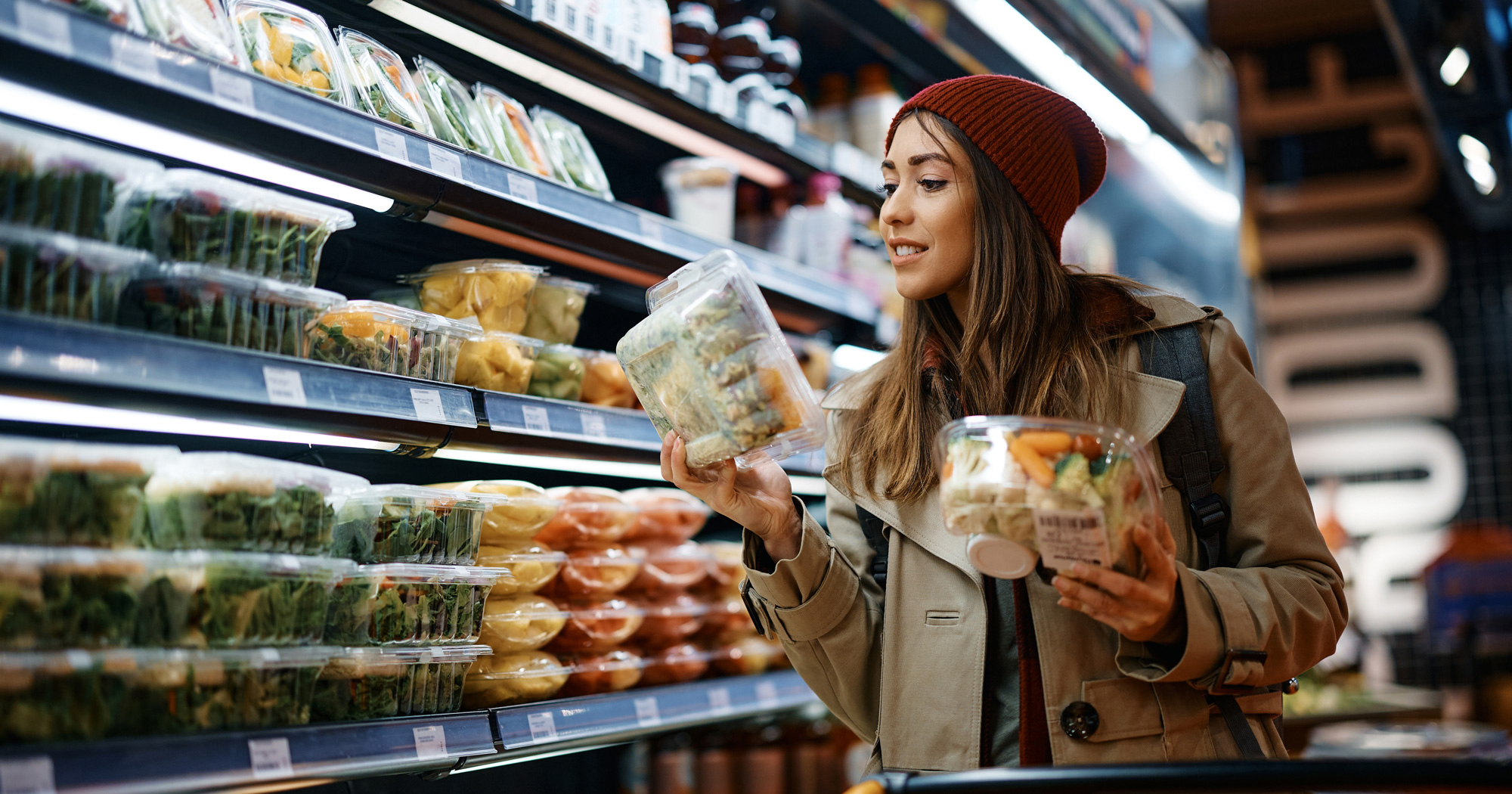Food waste is a significant environmental and economic concern with serious global consequences. Beyond simple inconvenience, food waste contributes toward the depletion of valuable resources, environmental degradation, and economic stress for both businesses and consumers. Recent years have made it clear that comprehensive solutions are needed to better manage this growing problem. While food packaging design might not be able to remedy this issue, it can help mitigate the environmental and economic tolls tied to food waste.
Causes of Food Waste
While many factors contribute to food waste, some are closely tied to or a result of food packaging:
Overproduction
Manufacturers may produce too much inventory after overestimating consumer demand.
Processing and Handling
Packaging may be damaged during production or shipping, which could cause products to become contaminated or spoiled before reaching shelves.
Storage
Improper temperatures or humidity levels can compromise a product’s intended shelf life, especially if the packaging has already been damaged.
Over Portioning
Products may be sold in large servings, which may not be used in full by consumers before expiration dates.
Food Packaging Design that Limits Food Waste
Expiration Dates
Food packaging generally includes expiration dates. However, they can sometimes be hard for consumers to find or read. Clearly printed, easily visible, and conveniently located use-by date allow customers to make more informed decisions about product freshness. QR codes or other smart labels that give consumers real-time product freshness information are a great alternative to traditional printed dates.
Portion Control Packaging
Single-serve snacks are already common in the food industry. However, there aren’t many options for single-serving meals outside of the freezer food section. Adjusting products to be packaged in single or smaller serving sizes prompts shoppers to buy and use only what they need, which lowers the likelihood of leftovers going to waste.
Resealable Packaging
Having effective closure tabs or other mechanisms that allow your packaging to reseal provides obvious advantages for customers. The ability to reseal packaging helps maintain product freshness after the initial opening, which prevents premature food spoilage and unnecessary waste.
Sustainable Food Packaging
As worldwide environmental concerns rise, demand for sustainable food packaging has risen. Recent studies have found that 82% of consumers are willing to pay higher prices for products packaged with sustainable materials. Cardboard and paperboard packaging materials are more sustainably sourced and are often made from recycled materials. They can help reduce landfill waste from discarded packaging while still offering customers the moisture, water, light, and dust exposure resistance needed to extend shelf life.
Active Packaging
Active packaging is designed to interact with food products in an effort to maintain optimal quality. Packaging with modified atmosphere, a mix of gases meant to slow deterioration, is frequently used in the industry. Time-temperature indicators are another option to consider. These indicators show whether food products have been exposed to poor or potentially harmful conditions like unfavorable temperatures to better help consumers gauge product quality.
Partnering with the Right Food Packaging Company
Food brands need a packaging partner who not only understands their needs but can also design packaging that helps meet their goals. As one of the leading providers of custom food packaging and boxes, MOD-PAC has you covered. Get in touch with us today to get started.


